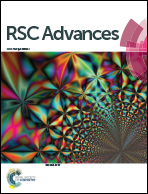Accelerated start-up, long-term performance and microbial community shifts within a novel upflow porous-plated anaerobic reactor treating nitrogen-rich wastewater via ANAMMOX process
Abstract
The anaerobic ammonium oxidation (anammox) process has gained much popularity in recent years following its success in nitrogen removal. However, not much has been reported on techniques to promote anammox bacteria immobilization and associated microbial community evolution. In this study, a novel upflow porous-plate anaerobic reactor (UPPAR) was developed and explored to promote biomass (anammox) retention and growth. To comprehend the performance of the UPPAR, its nitrogen removal efficiencies, as well as the microbial community dynamics involved in the nitrogen removal process, was evaluated and reported. When NLR ranging 0.98–1.08 kg m−3 d−1 was introduced at various stages of the UPPAR operation, a rapid start-up was achieved in 63 d, and the overall nitrogen removal rate could reach 90–95%. By the end of the start-up period, it was revealed that Proteobacteria abundance had reduced by 43.92% as opposed Planctomycetes which increased from 2.95% to 43.52%. Conversely, after the UPPAR had been operated for 124 d, thus at steady-state, the most pronounced phylum observed was Planctomycetes (43.52%) followed by Proteobacteria (26.63%), Chloroflexi (5.87%), Ignavibacteriae (5.55%), and Bacteroidetes (4.9%). Predominant genera observed included Candidatus Kuenenia – (25.46%) and Candidatus Brocadia – (3.15%), an indication that nitrogen removal mechanism within the UPPAR was mainly conducted via autotrophic anammox process. Scanning electron microscopy (SEM) revealed that sludge samples obtained at steady-state were predominantly in granular form with sizes ranging between 2 mm to 5 mm. Granules surfaces were dominated with normal to coccoid-shaped cells as revealed by the SEM.



 Please wait while we load your content...
Please wait while we load your content...